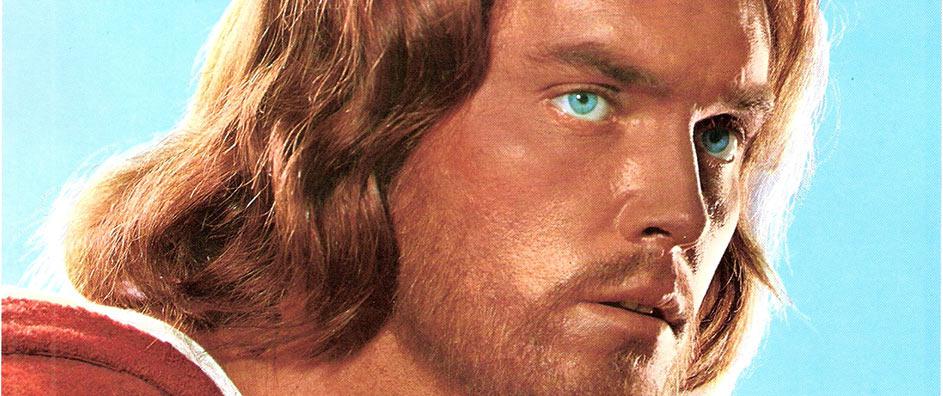Religion has often found its way into the heart of storytelling, weaving a tapestry of belief and morality through narratives that resonate with the human experience. In the realm of film, this relationship is particularly compelling, as cinema serves as a powerful medium through which the tenets of various faiths—including the Bahá’í teachings—can be expressed and explored. The concept of “Making a Leap of Faith” serves as a metaphor for the transformative journey that both characters within films and audiences embark upon when they contemplate profound spiritual themes.
At the core of the Bahá’í teachings is the acknowledgment that faith is not a mere adherence to rituals or dogmas but an active engagement with the world and a commitment to the betterment of humanity. This principle is encapsulated in the cinematic experience where viewers, through a leap into the unknown of a film’s narrative, encounter moral dilemmas, spiritual evolutions, and moments of enlightenment. The film, therefore, becomes not just a source of entertainment but a sanctified ground for discussions about virtue, justice, and the nature of divinity.
The cinematic exploration of religious themes often showcases protagonists wrestling with their belief systems, akin to pilgrims on a path of spiritual discovery. The depiction of this struggle invites viewers along for the journey, creating an immersive experience. It is here that the unique appeal of films structured around Bahá’í principles becomes apparent; they do not merely depict faith, but rather engender a climate of inquiry and coexistence—an essential tenet of the Bahá’í faith.
One vivid illustration of this can be seen in films that challenge characters to confront the realities of prejudice and inequity. These narratives often parallel the Bahá’í belief in unity and the elimination of prejudice in all its forms. The audience witnesses transformations not only within the characters but also within themselves, as they grapple with their own biases and misunderstandings. Such portrayals serve as poignant reminders of the Bahá’í exhortation to build bridges rather than walls, using the lens of film as a crucible for personal and societal change.
The metaphoric leap of faith in the context of cinema establishes a nuanced dimension of willingness. Filmmakers who intertwine Bahá’í concepts within their narratives encourage viewers to suspend disbelief and invest emotionally in the characters’ experiences. Through this emotional engagement, audiences find parallels between their own lives and those depicted on screen. The amalgamation of personal reflection and collective consciousness becomes a fertile ground where spiritual awakening can thrive.
Furthermore, the role of symbolism in film is crucial when examining the intersection of religion and cinema. The Bahá’í teachings emphasize the oneness of humanity and the interconnectedness of religion, often using rich symbolism to convey deeper truths. Films, through their visual storytelling techniques, can effectively encapsulate and communicate these intricate ideas. From the use of light to signify divine guidance to recurring motifs representing the interconnectedness of all beings, the thoughtful application of symbolism allows viewers to delve into spiritual disciplines subtly and provocatively.
In discussions surrounding the cinematic portrayal of faith, the aesthetic presentation plays an integral role in shaping the narrative experience. The use of cinematography that employs sweeping landscapes, edifying encounters, and moments of intimate clarity transforms the visual into the transcendental. Various cinematic techniques mirror the essence of Bahá’í teachings—focusing on beauty, the quest for truth, and the reverence inherent in the spiritual journey—while inviting viewers to reflect, engage, and ultimately embark on their quests for understanding.
The narratives enveloping Bahá’í themes often resonate with the struggles of contemporary society. Questions of justice, equity, and the search for belonging echo within the frames, drawing audiences into a consciousness that transcends mere entertainment. It beckons them to engage in discourse regarding the state of the world, embracing the Bahá’í theme of collaborative dialogue among diverse cultures and beliefs. Through film, the powerful questions that arise are not confined to the screen; they reverberate within the hearts and minds of viewers, stimulating reflection and encouraging action in their own communities.
Moreover, the presence of diverse cultural perspectives within films that explore Bahá’í teachings highlights humanity’s inherent diversity and shared values. The narratives encapsulate the vibrancy of differences while emphasizing the underlying unity that connects all individuals. This celebration of diversity not only broadens the scope of religious understanding but also serves as a testament to the Bahá’í principle of global consciousness, urging viewers to recognize their roles as stewards of collective development.
In conclusion, the interplay between Bahá’í teachings and cinematic expression invites an exploration of faith that transcends the superficial boundaries often associated with religion. The metaphor of “Making a Leap of Faith” transcends the confines of the screen, urging individuals to embark on their spiritual journeys, confront inequities, and foster harmony within human relationships. In this way, films inspired by Bahá’í principles serve not just as spectacles that delight but as transformative tools that enlighten, encourage introspection, and ultimately inspire societal evolution. The essence of Bahá’í faith—fostering unity and understanding—echoes through the art of filmmaking, reminding us all of the profound connections that bind us as a global community.
